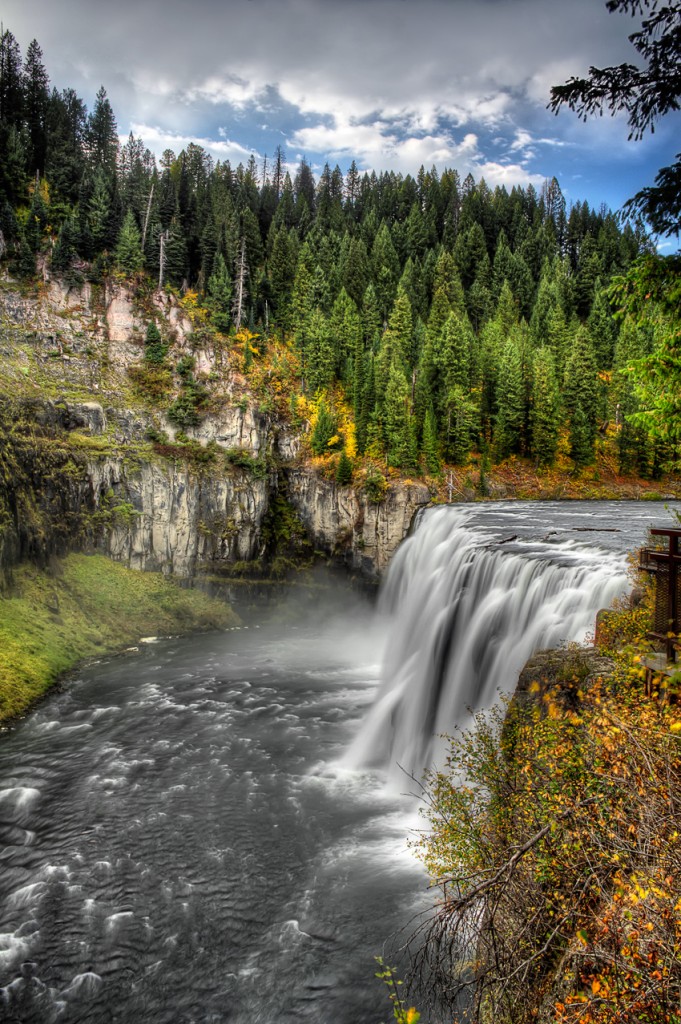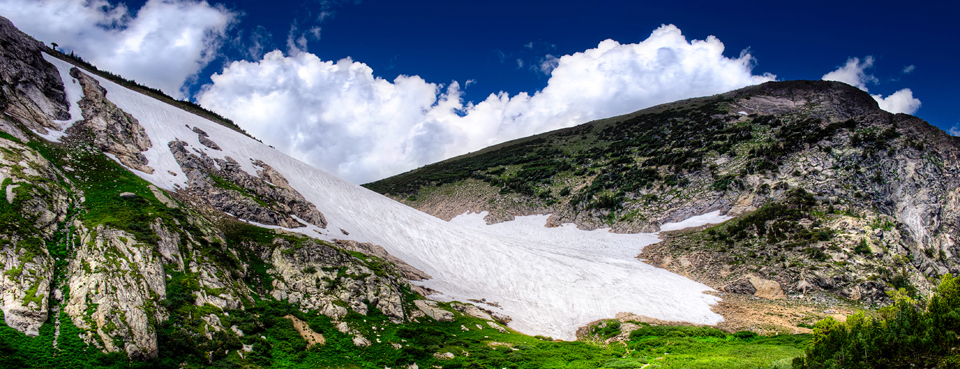
Mesa Falls, ID
High Dynamic Range (HDR) photography has become very popular over the past few years. The HDR technique is used to create photos that express the entire range of visual tones without the contrast limitations inherent in the camera. Thus, it creates an image much closer to that which is seen by the eye. These photos can be visually stunning and it is a great technique to add to your repertoire.
So, lets break this down Shutterhog style and get into the nitty, gritty details. The first thing you need is a subject matter that works well with this technique. Everyone has different opinions on what makes a great HDR photo. Personally, I don’t ever really plan on making an HDR image but use the technique when I have a large contrast range while shooting, such as with this photo of Mesa Falls in Idaho. As my good friend and fellow Shutterhog, Neal, continues to try and convince me that Idaho is a small slice of heaven on Earth, I find myself visiting some of the natural wonders of the state. My concept for photographing Mesa Falls was two fold: 1) to capture some nice, soft flowing motion in the water of the falls; and 2) to place the falls in the context of the cloudy Autumn day.
I set up my tripod and chose a vertical composition as it seemed to incorporate all the elements I hoped to capture including the blue sky, the Fall colors, and the waterfall. After several single shots, I realized that the exposure of the sky was very different then that needed for the flowing of the water. I either got nice flowing water and blown out sky, or nice blue sky and sharp underexposed water. I tried a gradient filter to darken the sky a bit, but still no luck. So, I finally decided to bracket the shot over 2 stops to get the proper exposures I needed to combine the photos into one HDR image. In this type of exposure scenario, I use HDR as a saving grace. You could also level out the exposures using compositing techniques in post-processing, which will be covered in later posts.
Now, some people will say for HDR you need a rigid 2-stop variance or a series of 5-7 images each with the small nuances of exposure changed. I honestly, just make sure I have one image with each element exposed properly. Sometimes this is 3 images over 2-stops or 5 images over 1-stop. My concern is not to get too focused on the technical aspects, but to make sure I get what I want out of the photo. In this series, I just made sure I had one exposure with the sky properly exposed, one with the the smoothness of the water properly exposed, and one with the trees and shrubs surrounding the area at correct exposure. In theory, I could have done this manually without even worrying about how many stops were involved.
I ended up using 3 exposures and processing and tone mapping them using Photomatix Pro from HDRsoft (www.hdrsoft.com). The HDR image along with the three individual exposures was then imported into Photoshop and a combination of masking, contrast enhancement, and NIK Color Efex Pro 3.0 (www.niksoftware.com) were used for further fine tuning. I have to admit, this is one of my favorite HDR photos I have processed to date and I never would have guessed that would be the case by looking at the individual images alone. Just goes to show you that the HDR process can find some hidden gems in your photo library, if you are savvy enough to bracket some exposures in difficult exposure situations.
For further info on HDR techniques check out Trey Ratcliff’s wonderful HDR tutorial over at www.stuckincustoms.com. His expertise in HDR processing is hard to beat and the wealth of info on his website is invaluable. His tutorial has helped me to fine tune my HDR skills. Additionally, I am putting together a detailed post-processing technique and analysis of this Mesa Falls HDR photo which will be posted in the near future so stay tuned in to Shutterhogs.com.
Now go create some HDR imagery!
-Alex


by awsmith
Thank you, Neal,for you help and telling me about your & Alex’s page!!
Hey Shari,
Thanks for the comment. We hope the information we post here will be useful. If there is any sort of topics you might be interested in learning more about please let us know and we will incorporate them into our posts. Got one coming out this week on RAW processing so stay tuned.
Take Care!
-Alex